How I’ve Learnt to Embrace Complexity
10 Nov 2022
‘Is it just me, or have the pitch projects we manage become a lot harder work than they used to be?’
This is something I’ve been asking colleagues at AAR Towers as another week goes by when I felt I’d definitely earned my money!
I’m sure that supporting CMOs and their teams in an agency review used to be a lot more straightforward: understand the client’s brief, match relevant agencies to this brief, meet to establish chemistry (or a lack of it), invite three or four to pitch, pick one and do a deal with them.
Today, while the destination hasn’t changed - namely, to find the right agency partner for the next stage of a brand’s development - getting there is a far more involving and complex journey than it once was.
Why is this?
And does it matter?
To answer the first question, I think there are four standout reasons that are inevitably interconnected: the brand, the agency, the customer, and AAR. Let’s start with the brand…
1. The Brand
That there are multiple touchpoints with which we can engage with a brand means to stand any chance of success, all of these touchpoints need to operate in harmony, and all in service of the customer. But I’m not telling you anything you don’t already know.
The implication, when it comes to a pitch, is that while marketing’s requirements may be for just one aspect of the brand’s communications, such as driving fame, this has an implication across the whole customer journey. Hence, in my example of fame being the north star, marketing needs to consider mid funnel education and lower funnel conversion to ensure the brand’s multiple touchpoints are aligned and joined up… in service of the customer.
All of which means more internal considerations and conversations across everyone who has customer marketing responsibility down at Marketing HQ.
Make sense?
Let’s move on to the agency’s role in making me work harder than I used to!
2. The Agency
CMOs want their agencies to be strategically aware of the full customer journey, if not always executionally responsible for delivering against all aspects of it. At the same time, agencies want to become stickier to their clients’ business by delivering better work across a broader portfolio of their services, and in doing so make more money.
The consequence is that there are more agencies that are brilliant at doing a lot more stuff to a very high standard and the competitive set for any agency is no longer exclusively those that appear more similar than different to each other.
Not so long ago a pitch list consisting of AMV, Ogilvy, Saatchi’s and McCann could be taken as a sign of a CMO who knows what they want from an agency partner. But today the very same CMO might choose MullenLowe, Wunderman Thompson, Mother and NCA to pitch, with all four agencies having a more than credible reason for being invited to participate, despite their superficial lack of similarity to each other.
The consequence being that there’s a greater number of justifiably credible agencies to be considered for any one opportunity than ever before. All of which we need to take account of when advising marketers and their teams.
See why I’m having to work so hard?
And so to the customer, or more specifically the access to data about the customer with an abundance that is bordering on pervasive.
3. The Customer
Customer understanding and segmentation is at a level of sophistication that make my days as a media planner striving to achieve an ABC1 adult coverage and frequency target seem positively amateur (which in my case was definitely true).
This will invariably manifest itself in questions around data, platforms and tech stacks, and the compatibility between what sits within the brand organisation with what the agency can accommodate.
Moreover, who and where to partner for all of this? The specialist standalone CX agency? The integrated network? The media agency?
And if you’re still with me, are you getting the picture about how complicated this all is?!
So on to AAR and our role in helping to manage and navigate this complexity.
4. AAR’s role
The biggest change in our approach, and rightly so, is not to jump straight into thinking about what agencies might fit the brief, but to step back and start by interrogating the CMOs internal organisation and marketing ecosystem.
What stage of transformation are they at? We’re all in transformation aren’t we, so it’s important to find out at what stage the brand team is?
Questions about structure, ways of working, internal capabilities and competence within the marketing team all need to be answered and dealt with before going anywhere near an agency longlist.
All of which has transformed the job of an intermediary (glorified matchmaker, as I’ve been described) into a consultant (much more in keeping with what I tell my kids I do).
These are, for me, the four standout reasons why it’s all got a bit more complicated and hence I’m working harder than I used to.
As for my question as to whether any of this matters - it most certainly does!
Opportunities across the agency and consultancy landscape for CMOs are ever more diverse and impressive.
Having clarity about your agency’s superpower will help you decide where to place your new business efforts as much as it will help a CMO to decide whether your agency is worthy of closer inspection.
And if that weren’t reason enough, it means that I may not have to work as hard as I have been doing.
Here’s hoping!
About The Author





